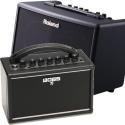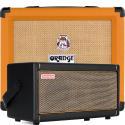Ways to Use Electric Guitar Headphones Like a Pro

Playing electric guitar can be a blast. But blasting your guitar amps isn't the best idea to keep your neighbors onside.
Thankfully, electric guitar headphones are here to save the day. They're the perfect solution to your noise problem and maintaining that neighborly love.
In this article, you'll learn...
-
What are Electric Guitar Headphones?
-
Why are they Useful?
-
Ways to Use Electric Guitar Headphones.
I'll also share tips and experiences to help you pick the right headphones.
So let's start with...
What are Electric Guitar Headphones?
These are headphones used for projecting the guitar signal into your ears, much like earphones. They are plugged into a guitar amp (big or small) or a guitar processor, allowing for quiet playing.
Similar to earphones, they work like mini-speakers on your head.
What sets them apart from earphones is that headphones are like a fortress. So when you play guitar, your ears are isolated.
Because they are isolated, no outside noise gets in, and more importantly, no sound comes out.
It's a perfect way to play guitar so that you can focus on your music.
Why Are They Useful?
Keep your neighbors happy.
As electric guitarists, we all get pumped on the guitar amp roar. It's loud and aggressive, which is perfect for classic rock. And that's one of the reasons we play electric guitar in the first place, right?
But, if you like cranking up the amp dial to 11 without headphones, you probably won't win any neighborhood peace awards any time soon.
There is a better way.
You can play the electric guitar silently via guitar amp headphones while keeping your neighbors as happy as a dog with two tails.
Suppose you're looking for a more organic feel. In that case, I've got brilliant news: newer headsets can give you that immersive experience. Read on to find out how.
I'll also share some good tips on how to play the electric guitar silently.
Ways To Use Electric Guitar Headphones
Now that we've covered some basics about headphones, let me show you the different options to play guitar through headphones.
1. Guitar Headphone Amps
These compact amplifiers plug straight into your guitar, so you're not tethered to a fixed-position amplifier. These bug-type headphone amps are specially optimized for headphones, giving you good guitar tones and the freedom to play virtually anywhere. More importantly, you do so with minimal disturbance to the people around you.
The Vox Amplug line is an excellent example, they come in different guitar tone flavors and conveniently run on batteries. My favorite among them is the Vox Amplug 2 Classic Rock headphone amplifier. Modern examples include the Boss Waza-Air Wireless Headphone Amp, which combines a Bluetooth headset with a bug-type headphone amp for true untethered playing.
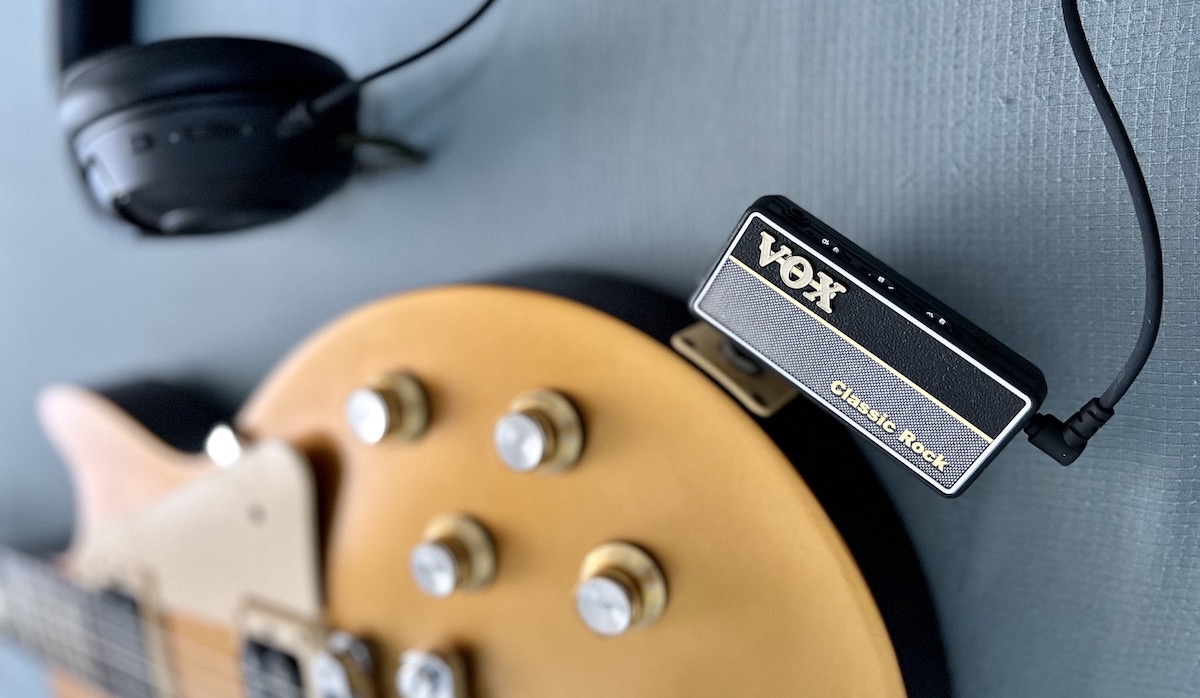
Advantages: This is the most convenient option for those who prefer playing guitar through headphones.
Disadvantages: Due to their small size, features are limited. They don't have built-in speakers.
2. Guitar Processors / Multi-Effects Pedals
Most modern guitar processors or multi-effects pedals have a headphone output jack. And since they have built-in DSP (Digital Signal Processing), they provide amp emulations that sound good through headphones.
Guitar processors also come with amp modeling and effects and extra features like looping USB direct recording and more. A compact multi-effects pedal is perfect for headphone use since it won't take up much space when practicing in small rooms. This method also works for bass guitar, acoustic guitar, and other pickup-equipped equipped stringed-instruments.
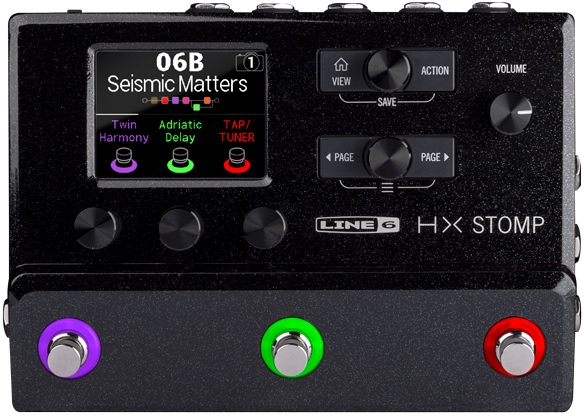
Advantages: Aside from having good-sounding headphones out, guitar processors offer much functionality and can be used for playing live. This is the best value solution for playing guitar through headphones.
Disadvantages: You're tethered to a floor unit while practicing. You can place the processor on a desk, but you will lose its hands-free foot control functionality.
3. Micro Guitar Amps
These are small battery-powered guitar amps. A micro-guitar amp has most of the features of regular guitar amps, including its guitar jack input ports, but fits it into a small unit.
These amps are designed for intimate low-volume playing, with a small built-in speaker. They are also suited for quiet playing with their headphones output.
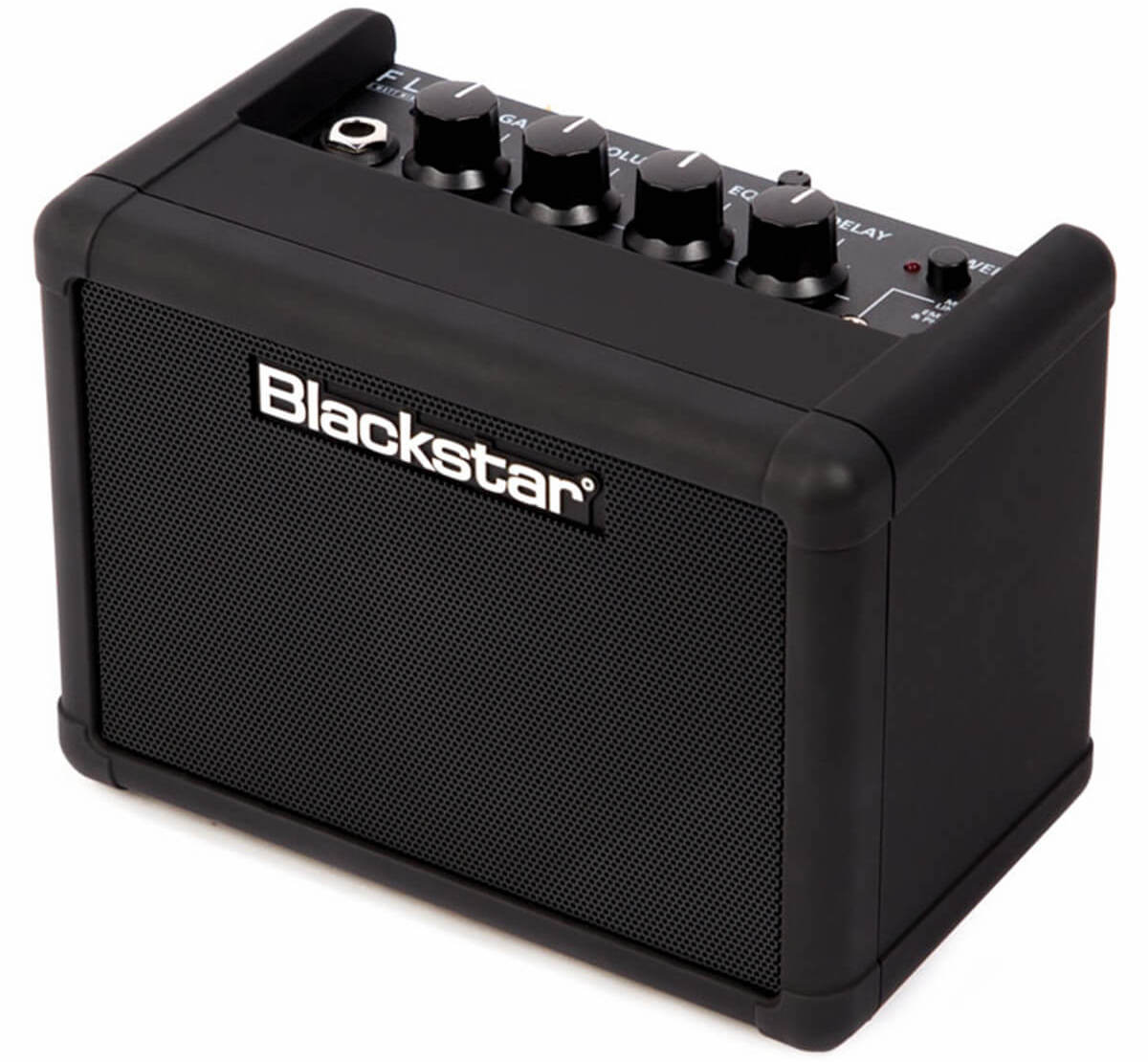
Advantages: Small amps are generally cheaper. Their small size makes them convenient and portable, perfect for intimate practice.
Disadvantages: Limited volume and features compared to bigger amps
4. Plug Into A Guitar Amp
Guitar amps or amp heads usually come with a phone or headphone port, which you can plug headphones into using a 6.5mm or 3.5mm headphone jack.
It used to be that plugging headphones into an amp resulted in thin-sounding, uninspiring tones. But most modern amps now come with speaker-emulated headphone output, allowing for amp-like tone even through headphones.
Once your guitar cable is plugged into the amp, check the front and back of your guitar amplifier to find its headphone port. Next, turn off the volume before plugging in your headphones. Once plugged in, slowly turn up the volume and start playing. This way, you don't damage your headphones or your ears.
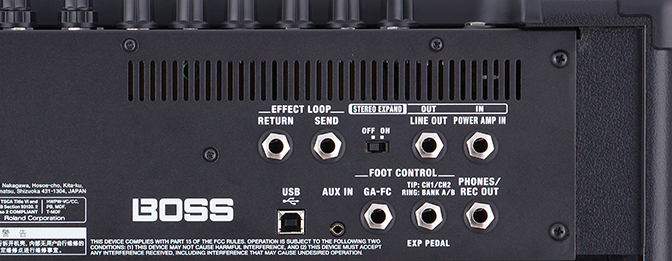
Advantages: Since you're plugging into your existing amp to play silently, there's no need for extra gear.
Disadvantages: Big guitar amps are neither portable nor practical for small room practice. Some guitar amps don't have headphone jacks.
-
Some guitar amps don't have a headset jack. So, make sure that the output port is supposed to be for headphones before plugging it in. Some outputs connect to a speaker; connecting your headphones to it will damage your equipment. And if you're still in doubt, check the manual and see if the output jack is really for headphones.
-
If you have a 3.5mm headphone jack but don't have an aux port in your amp, use a 6.5mm audio adapter to plug into the phone or headphone port instead.
Check out our guide on audio connectors.
5. Audio Interface
If you want to play electric guitar through headphones via computer or mobile device, use an audio interface. This setup lets you use amp modeling software and effects to customize your electric guitar sound. Note that the audio interface by itself does not come with tone-shaping features or guitar effects.
This is the ideal setup for going straight to DAW (Digital Audio Workstation) for recording. You plug your headphones into the headphone outputs of your computer or smart device, and you get the benefit of high-end recording and tone shaping. There are audio interfaces designed specifically for guitar use, like the iRig 2 and iRig HD 2.

Advantages: Audio interfaces are the go-to gear for home recording.
Disadvantages: This requires multiple pieces to work, including a computer or smart device, cables, and multiple software.
My Tips For Selecting The Best Headphones For Playing Guitar
-
Start with your budget. Find something that fits your wallet, but you should spend a little more if you want better sound quality.
-
If you plan to play electric guitar with headphones long-term, consider it an investment, so choose durable, good sound quality headphones.
-
Comfort is also essential since headphones are something you'll be wearing. They must be light and comfortable to your ears.
-
To get better immersion, go for a closed-back pair of headphones. They offer the best isolation, which is ideal for both recording and practice. The downside is that they tend to be uncomfortable for long-term use. So don't neglect to take breaks in a long practice session or recording.
-
Ensure that you're plugging into the headphone jack and not on the speaker out. This should be clearly labeled. If you need more clarification, check the user manual.
Final Thoughts
Playing through electric guitar headphones lets you crank up the volume while keeping your playing and excitement discreet.
Now you can have your own private arena, so you can shred your guitar without a care in the world.
Now have fun playing the guitar without disrupting anyone.
If you still have some questions, make sure you keep reading for a short FAQ section.
Electric Guitar Headphones FAQ
What Headphones Should I Use for Guitar?
Closed-back headphones give you the best isolation to immerse yourself in your guitar sound and effects. And there is less sound leaking that can disturb the people around you.
The Audio Technica ATH-M50x is one of the most popular headphones among guitar players. It ranks among the best studio headphones that we recommend here at Gearank. It is one of the best value choices available among the many studio headphones in the market.
On the flip side, this specification type makes for a bulky and heavy design. So they tend to be hot and uncomfortable when used for long practice sessions and studio work.
Another consideration is your environment; big closed-back headphones will be uncomfortable in a hot and humid room.
Can I Plug My Headphones to My Guitar?
No, although the plug fits, you won't get any sound. Processing your raw guitar signal requires the proper music gear. In this case, you need an amp or an audio interface.
It'll convert your electric guitar signal into a sound you can hear through your headphones.
Now go to our best closed back headphones guide to start comparing specifications.
Contributors:
Jerome Arcon - Co-writer and Illustrations (Image Credit)






